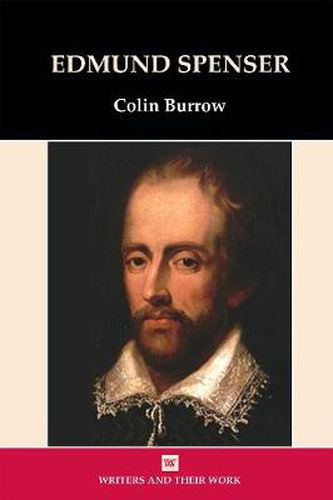Readings Newsletter
Become a Readings Member to make your shopping experience even easier.
Sign in or sign up for free!
You’re not far away from qualifying for FREE standard shipping within Australia
You’ve qualified for FREE standard shipping within Australia
The cart is loading…






Edmund Spenser (1554-1599) was the greatest Elizabethan poet, whose Shepheardes Calendar (1579) inaugurated a revolution in English poetry, and whose unfinished Faerie Queene (1590-96) was the longest and most accomplished poem written in the sixteenth century. Readers have always been immediately attracted by the fluid grace of is language, and by the magical world of dwarfs, hermits, knights and dragons evoked in The Faerie Queene, but have often been bewildered and overawed by the bulk and complexity of his writing. In this approachable and informative book, Colin Burrow clarifies the genres and conventions of work in Spenser’s poem. He explores the poet’s taste for archaism and allegory, and the native of epic and of heroism in The Faerie Queene. He presents Spenser as a ‘Renaissance’ poet, who is drawn at once to images of vital rebirth and to images of mortal frailty. In clear, jargon-free prose he explores Spenser’s equivocal relationship with his Queen and with the Irish landscape in which he spent his mature years. Spenser emerges from this book a less orthodox and harmonious poet that he is often thought to be, but as a complex, thoughtful and attractive writer.
$9.00 standard shipping within Australia
FREE standard shipping within Australia for orders over $100.00
Express & International shipping calculated at checkout
Edmund Spenser (1554-1599) was the greatest Elizabethan poet, whose Shepheardes Calendar (1579) inaugurated a revolution in English poetry, and whose unfinished Faerie Queene (1590-96) was the longest and most accomplished poem written in the sixteenth century. Readers have always been immediately attracted by the fluid grace of is language, and by the magical world of dwarfs, hermits, knights and dragons evoked in The Faerie Queene, but have often been bewildered and overawed by the bulk and complexity of his writing. In this approachable and informative book, Colin Burrow clarifies the genres and conventions of work in Spenser’s poem. He explores the poet’s taste for archaism and allegory, and the native of epic and of heroism in The Faerie Queene. He presents Spenser as a ‘Renaissance’ poet, who is drawn at once to images of vital rebirth and to images of mortal frailty. In clear, jargon-free prose he explores Spenser’s equivocal relationship with his Queen and with the Irish landscape in which he spent his mature years. Spenser emerges from this book a less orthodox and harmonious poet that he is often thought to be, but as a complex, thoughtful and attractive writer.